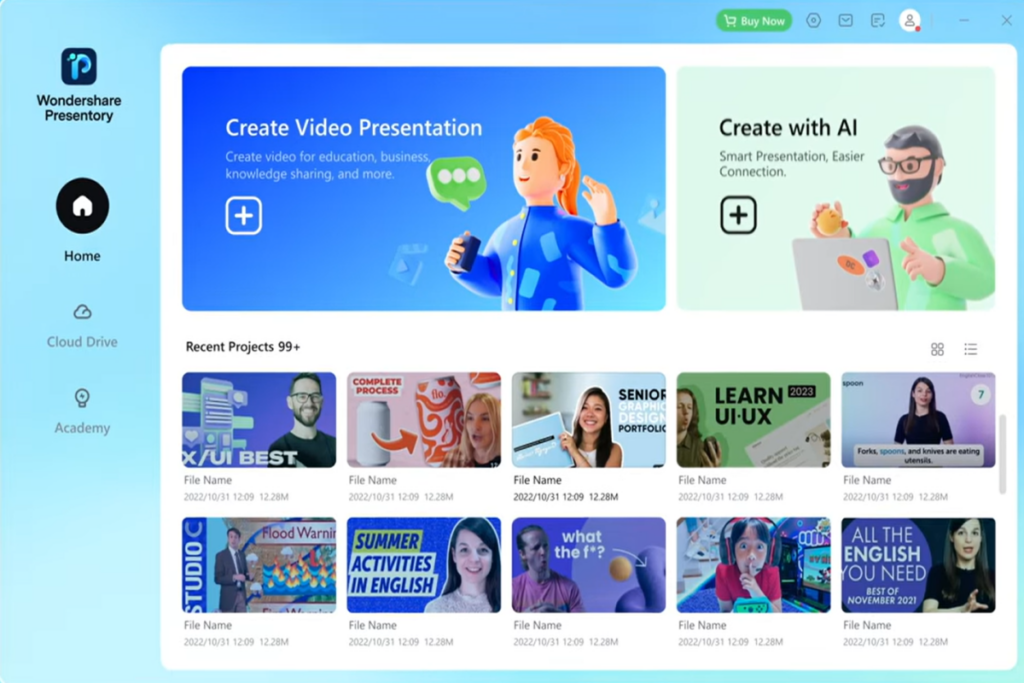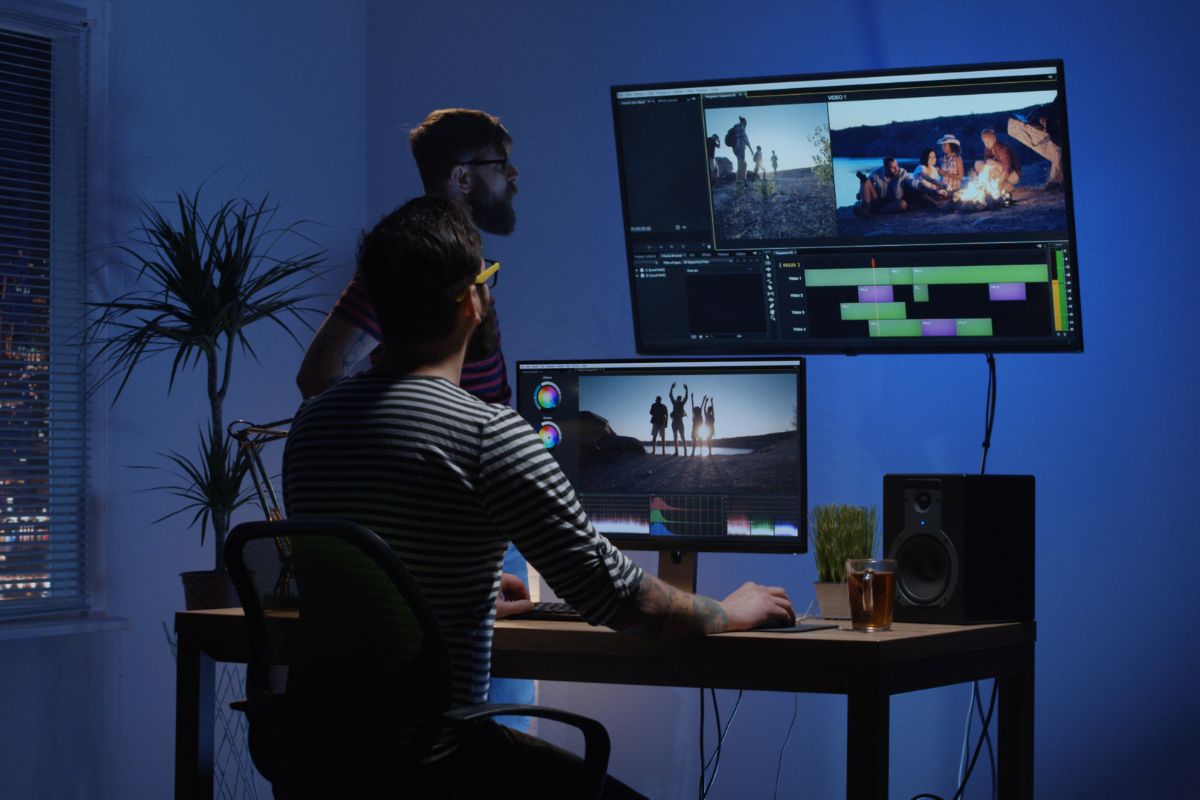Over the course of my 10+ years in the industry, I’ve crafted numerous eLearning videos to make learning accessible, engaging, and genuinely effective. Along the way, I’ve discovered the key to creating content that educates, captivates, and inspires learners lies in two critical factors — adhering to best practices and dedication to continuous improvement.
In this article, I’m going to lay out an in-depth guide for creating eLearning videos that go beyond merely conveying information. You’ll learn how to create eLearning videos that resonate deeply with your audience, fostering a genuine connection and a thirst for knowledge.
Whether you’re a seasoned instructional designer, someone looking to create an online course, or just starting out in eLearning, I’m confident that you’ll find nuggets of wisdom and practical advice you can start putting into practice immediately.
Guidelines for Making Better eLearning Videos
1. Plan and Prepare Thoughtfully
When starting a new eLearning video project, the first step is always about setting clear objectives. Defining what you want your learners to take away from the video is like charting the course of your entire project.
- Identify Learning Objectives: Start by asking yourself, “What should learners be able to do or know after watching this video?” Be specific and ensure your objectives are measurable. For example, “Learners will be able to identify and troubleshoot common software issues.”
- Consider Prerequisites: Think about any prior knowledge or skills your learners should have before diving into your video. If necessary, provide resources or links to prerequisite content.
- Create an Outline: Once you’ve established your learning objectives, create an outline for your video. This serves as a roadmap for your content, helping you organize your thoughts and structure the video effectively.
- Define Success Metrics: Decide how you will measure the video’s success. This could include tracking completion rates, quiz scores, or post-video surveys to gather feedback.
2. Understand Your Audience
Knowing your audience inside out is paramount for creating eLearning videos that resonate with them.
- Create Learner Personas: Develop learner personas, which are fictional profiles of your typical audience members. Consider factors such as their age, background, job roles, and prior knowledge.
- Identify Learning Styles: Different learners have different preferences when it comes to how they absorb information. Some may be visual learners, while others prefer text or hands-on activities. Tailor your content to accommodate various learning styles.
- Adapt to Diverse Audiences: If your audience is diverse, consider creating multiple versions or supplementary materials to cater to different learner needs.
3. Craft Compelling Content
Scripting is the backbone of my eLearning videos. Writing a clear, engaging script or outline helps me structure my videos and ensures I cover all the essential points.
- Be Concise: I’ve found that the most effective eLearning videos are concise and to the point. Aim to deliver your message within 5 to 15 minutes. Break longer topics into smaller, digestible segments. This microlearning approach can help keep students more engaged and improve retention of your concepts.
- Stay Focused on Goals: Identify the core concepts or skills your learners need to grasp and concentrate on those. Avoid overwhelming your audience with unnecessary details. Wondershare Presentory makes this part easy, with their AI-powered assistant that takes your learning outcomes and goals and helps you create an exceptional presentation.
- Make it Real, Make it Relevant: Whenever possible, include practical examples or scenarios that demonstrate how the information can be applied in real-life situations. This helps learners see the practical value of the content.
- Summarize and Recap: End your video with a summary or recap of the key points covered. Reinforcing the main takeaways can enhance retention.
4. Use Visual Elements Strategically
Visuals play a pivotal role in making eLearning videos more engaging and informative.
- Select Relevant Content: Choose visuals that are directly related to the content. Whether it’s images, diagrams, charts, or animations, they should enhance the understanding of the topic you’re discussing.
- Tell Stories with Visuals: Use visuals to tell a story or to illustrate a concept. This not only makes the content more relatable but also adds a layer of engagement that can captivate your audience.
- Balance Visuals: Maintain a consistent, uncluttered visual style throughout your eLearning videos. Don’t overload your video with visuals OR text. This creates a cohesive and professional look, which can help in reinforcing the credibility of your content.
- Consider Accessibility: Ensure that the visuals you use are accessible to all learners. For example, if you’re using text within images, provide alt text or captions for those with visual impairments.
5. Don’t Skimp on Audio Elements
Clear and high-quality audio is essential for creating a distraction-free learning environment in your eLearning videos.
- Invest in a Quality Microphone: A good voice over microphone is a must. It can significantly improve the clarity of your voice and reduce background noise, making it easier for learners to focus on the content.
- Select an Appropriate Recording Environment: Choose a quiet environment for recording. Minimize background noise by turning off fans, air conditioners, or any other potential disturbances. You may even wish to outfit your studio with items like acoustic foam panels and soundproof curtains to help create a better recording environment.
- Prepare Script and Practice: Writing a clear script and practicing your narration helps in maintaining a steady pace and clear enunciation. Speak confidently and at a moderate speed to ensure learners can easily follow along.
- Use a Teleprompter: When possible, use a teleprompter so you can maintain eye contact throughout the presentation. Tools such as Wondershare’s Presentory makes this easy with a built-in teleprompter.
- Edit and Test Audio: After recording, use audio editing software to further enhance audio quality. You can remove background noise, adjust volume levels, and make other necessary improvements.
6. Build Rapport with Your Audience
Engaging narration is a critical aspect of creating effective eLearning videos.
- Connect with the Audience: Try to establish a connection with your audience. Use relatable examples, anecdotes, or humor when appropriate. A personal touch can make the learning experience more enjoyable.
- Speak Confidently: Speaking confidently comes with practice. The more you narrate, the more comfortable and confident you become. Remember, your confidence as a narrator can be contagious.
- Speak Clearly: Clearly pronounce words and speak at a moderate pace. Articulate each word to ensure learners can understand you, especially if you have an international audience.
- Vary Tone and Inflection: Use variations in your tone and inflection to add interest to your narration. Adjust your voice to convey excitement, seriousness, or any other emotions relevant to the content.
7. Include Interactivity and Assessments
Keeping learners engaged and assessing their understanding are essential for effective eLearning.
- Use Quiz and Polls: Integrate quizzes and polls at strategic points in your videos. This not only checks learner comprehension but also encourages active participation. Learners can test their knowledge as they progress.
- Include Interactive Exercises: Create hands-on, interactive exercises that allow learners to practice what they’ve learned. It’s a great way to reinforce concepts and boost engagement.
- Build in Gamification Elements: Consider gamification elements, such as points, badges, or leaderboards, to make the learning experience more competitive and engaging.
8. Build eLearning Content That is Accessible and Inclusive
Ensuring that your eLearning videos are accessible to all learners, including those with disabilities, is crucial.
- Provide Closed Captions and Transcripts: Provide closed captions and transcripts for videos to assist learners with hearing impairments and those who prefer reading.
- Don’t Forget Alt Text and Color Contrast: Use descriptive alt text for images and ensure high color contrast for improved accessibility, particularly for visually impaired learners.
- Test Content with Assistive Technologies: Regularly test your content with assistive technologies like screen readers to ensure compatibility and usability.
- Employ Inclusive Language: Use inclusive language, avoid jargon, and steer clear of cultural references that might exclude or confuse learners from diverse backgrounds.
9. Use the Right Tools
Selecting the right hosting platform and implementing analytics tools are crucial for delivering and improving your eLearning video strategy.
The platform you choose should be scalable, user-friendly, secure, and flexible.
I’ve found that Wondershare Presentory meets all these requirements and many more, making it an excellent option for creating and sharing eLearning videos.
The feature that really stands out to me is its AI-enhanced tools that allow educators and eLearning professionals to create impactful presentations with ease.
I also love that it’s super easy to use. The intuitive interface of Presentory makes it accessible for users of all skill levels, so you can easily create high quality, engaging content without a steep learning curve. Additionally, the platform offers one-click sharing to enhance the reach and impact of presentations.

All in all, this video presentation tool is particularly beneficial for knowledge sharing, training, and educational purposes, providing a ton of resources like animation effects, texts, stickers, and a continuously updated template library.
Presentory can be downloaded for Windows or accessed online from your browser (Mac users can access the online version).
Check out our Wondershare Presentory review for more info on this tool.
10. Collect Feedback for Continuous Improvement
Remember, gathering feedback is a crucial part of the eLearning video creation process. My approach involves various methods to collect insights and fine-tune content. I create surveys and questionnaires to gather feedback from learners, covering aspects like content clarity and suggestions for improvement.
Continuous review of learner feedback is part of my process, allowing for adjustments to eLearning videos. This iterative approach ensures that the content remains relevant and effective. Seeking feedback from colleagues or peers in the eLearning field is valuable, as they can offer fresh perspectives and suggestions for improvement.
11. Respect Copyright Rules
Respecting copyright and providing proper citations are essential for creating ethical and legally compliant eLearning videos.
In this regard, my approach is multi-faceted. I always begin by conducting thorough copyright research to ensure I have the necessary rights to use any third-party content, such as images, videos, music, or text, in my eLearning videos. If I encounter any uncertainties, I don’t hesitate to consult legal or copyright experts for guidance.
Whenever possible, I opt for resources that are available under licenses permitting educational use. Materials with Creative Commons licenses or those falling into the public domain are excellent choices for ensuring compliance.
Final Thoughts
Remember, eLearning design is a dynamic and ever-evolving field. Ongoing learning and commitment to continuous improvement are your most valuable assets. Each project I have undertaken has improved my understanding of what it takes to create compelling eLearning videos.
The insights I’ve gained along the way continue to inform my work. These are not just theoretical principles but practical, battle-tested strategies that have yielded exceptional results in the real world of education.
As you venture into your own eLearning video creation journey, I hope these insights serve as a guiding light, illuminating the path to creating exceptional educational experiences. By applying these tips, you can harness the power to connect, educate, and inspire learners on a profound level.


